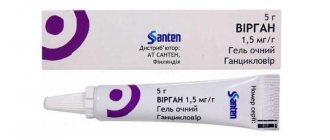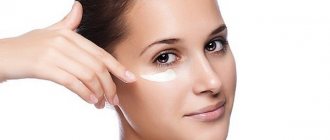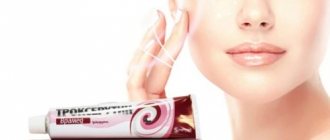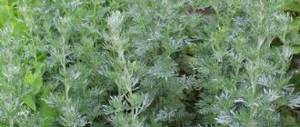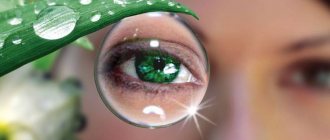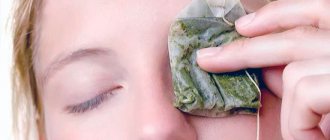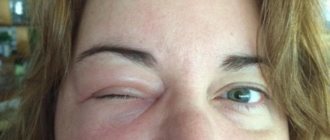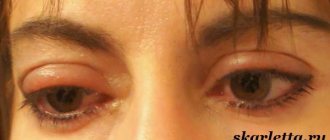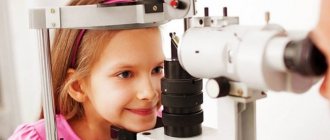Pharmacological authorities
Pharmacodynamics.
The current source of medicine is a deproteinized hemoderivative, extracted from the blood of calves by dialysis and ultrafiltration, which removes a large number of low molecular weight components. It promotes tissue regeneration in cases of diarrhea, quenching non-stagnant sour or living tissues, and also accelerates the process of tissue renewal.
Solcoseryl, an oral gel, promotes regeneration of the epithelium and suppresses corneal injuries, and, as a result, changes corneal scars or prevents their healing.
Pharmacokinetics.
Indicators of absorption, distribution and excretion of deproteinized hemoderivative, extracted from the blood of calves, cannot be monitored by conventional pharmacokinetic methods (for example, with the use of different radioactive markers), so the activity of the drug lies in From numerical speeches with various physical and chemical authorities.
Ophthalmic indications
Solcoseryl eye gel is effective in the treatment of all types of lesions of the mucous membrane of the eye and cornea. The active components of Solcoseryl activate the production of collagen fibers, so after treatment all wounds heal almost without consequences. The components of Solcoseryl not only improve tissue diffusion, but also facilitate the intake of beneficial microelements and the outflow of metabolic products.
Usually the drug is prescribed for severe eye damage. This can be mechanical damage, degenerative processes, chemical burns, allergic reactions. Solcoseryl shows good results in the treatment of surgical injuries. The product accelerates tissue regeneration and healing of the wound channel. The gel can be used to prevent corneal scarring.
What conditions require the use of Solcoseryl:
- Mechanical damage to the cornea or conjunctiva.
- Healing of surgical incisions of the cornea and conjunctiva (keratoplasty, cataract extraction, laser and anti-glaucoma operations).
- Corneal burns (chemical, radiation, thermal).
- Ulceration of the cornea at the stage of epithelization (bacterial, viral, fungal ulcers).
- Dystrophic processes in the cornea (keratitis, dry keratoconjunctivitis).
- Adaptation to contact lenses.
Solcoseryl is also prescribed in cases where contact lenses irritate the eyes and cause ulcers. The gel covers the mucous membrane evenly, which ensures long-term exposure to active substances. The drug has a regenerating effect in case of mechanical and chemical irritation of soft tissues and mucous membranes.
Features of good stagnation
Shards of eyeglass gel may stick to contact lenses; do not wear contact lenses while cleaning with the product. Solcoseryl, ophthalmic gel must be prepared according to the doctor’s recommendation. The drug should not be stored for the treatment of others who are ill or passed on to other persons. During bathing, it is necessary to adhere to the rules of special hygiene, such as regularly washing your hands. It’s not a good idea to stick your hands around the pipette spout. It is recommended to close the tube immediately after taking the drug. It is important to notify your doctor if the patient is experiencing episodes of allergies. In case of infection of the cornea, the drug must be combined with appropriate antimicrobial therapy.
Solcoseryl replaces benzalkonium chloride, which can cause teasing. It is necessary to avoid contact with soft contact lenses (remove contact lenses before applying the drug and reinsert them 15 minutes after drying). Protects soft contact lenses.
Methods of application
Adults are usually prescribed a drop of gel 3-4 times a day. The product is intended for instillation into the conjunctival sac. In case of severe eye damage, it is recommended to instill Solcoseryl gel every hour. The drug does not contain alcohol or dangerous chemical compounds, so an overdose is unlikely.
Dosage and duration of treatment:
- For irritated, red eyes. Instill a drop every 6 hours.
- Treatment of hemorrhage in the membrane. For this diagnosis, eye drops are used. Instill 2 drops four times a day and remain in a supine position for 5 minutes.
- Damage to the cornea or conjunctiva. Solcoseryl gel can be prescribed not only for mechanical, but also for bacterial eye lesions. The gel is instilled three times a day, 2 drops. Therapy is continued until symptoms disappear. Severe damage requires two courses of treatment to eliminate all consequences.
- Ulcers and corneal dystrophy. The gel is instilled 3-4 times a day, 2 drops. Usually it takes 10-15 days to recover, but the doctor can extend the course and increase the dosage.
To improve the tolerability of contact lenses or adaptation to hard lenses, you need to instill the gel on the surface of the lens before putting it on, as well as into the eye after removing it. To improve adaptation to soft contact systems, you need to instill a drop after removing the lenses before going to bed.
Suspension during pregnancy or breastfeeding
Vaginism
Clinical data on the status of hemoderivative stagnation in the blood of calves during the period of gestation, on a daily basis.
Data obtained in studies on animals indicate the presence of direct or indirect negative effects on vaginity, embryonic/fetal development, canopy or postnatal development. It is necessary to use caution when administering medications to women during pregnancy.
Anniversary breastfeeding
Solcoseryl, oral gel, can be frozen during lactation only after a thorough assessment by the doctor of the potential cortex for the mother and the potential cortex for the child.
The effectiveness of Solcoseryl eye gel
Solcoseryl gel is a medicinal stimulant that accelerates the regeneration of cells of the mucous membranes and epidermis. The active components of the drug trigger metabolic processes in tissues, which promotes the healing of any damage. The eye gel improves local blood circulation, thereby speeding up the healing process.
An aluminum tube of Solcoseryl contains 5 g of gel, which is enough for a month of use. The odorless, semi-liquid gel has a yellowish tint. The main active ingredient is hemoderivat, synthesized from the blood of calves. Additional components include carmellose sodium, sorbitol, disodium edate dihydrate, benzalkonium chloride, water.
The effectiveness of Solcoseryl is due to its unique composition. Components extracted from the blood of calves contain many amino acids, vitamins and beneficial compounds. Thanks to cellular material and immunoglobulins, the protective layer of the mucous membrane is quickly restored, inflamed wounds are disinfected, and the wound site is surrounded by a protective barrier.
Studying the absorption, distribution and excretion of deproteinized hemoderivative is complicated because it contains a mixture of molecules with different physical and chemical properties. It was found that the drug begins to act actively 20 minutes after application, and the effect lasts for 3 hours. When using a gel, the effect is limited to the application site.
Method of congestion and dosage
Place 1 drop into the conjunctival sac 3–4 times a day.
Do not point your fingers at the pipette nozzle.
Then close the tube with a lid tightly after vikoristan.
Before instillation of various ophthalmic medications, it is recommended that the treatment interval be at least 15 weeks.
Patients are advised not to touch the pipette nose to any surfaces of the eye or to extra parts of the eye. If this recommendation is not followed, the intravenous gel may become clogged with bacteria, which can lead to infection. The use of clouded eye gel can lead to serious damage to the eye and, as a result, loss of vision.
Method of curing:
1. Before the first drying, the trace should be pressed into the ring so that the ring on the cup is not damaged.
2. Vimity hands.
3. Unscrew the cup and open the tube.
4. Be careful and do not touch the pipette nose to any surfaces, eyes or too many parts of the eye, as the eye gel may become contaminated with bacteria, which can lead to infections, etc. about the prevention of serious eye damage and loss of vision.
5. Lift your head, carefully pull out the lower head and carefully drop 1 drop of gel into the conjunctival sac.
6. Press the inner corner of the eye with your finger or close the eyes for 2 minutes after instillation. This step interferes with the absorption of the drug into the body.
7. Repeat steps up to steps 4–6 to instill the drug in the other eye.
8. Close the tube tightly with a scoop after instilling the gel.
Old age patients
The need to change the dosage is daily.
Patients with impaired liver or liver functions
The need to change the dosage is daily.
Application of the drug Solcoseryl eye gel
Instill 1 drop of gel into the conjunctival sac of the affected eye 3–4 times a day. In severe cases, eye gel can be instilled every hour. To speed up adaptation to hard contact lenses, you can drip eye gel directly onto the surface of the lens before wearing it and into the conjunctival sac after removing the lens. To adapt to soft contact lenses, it is recommended to instill Solcoseryl once a night after removing the contact lens. The tube should be closed immediately after use.
Side effects
Adverse reactions, overestimated below, distributed by frequency and by organ systems are consistent with MedDRA classification (Glossary of medical terms for regulatory activities).
Criteria for assessing the frequency of development of an adverse drug reaction:
Very often: ≥ 1/10.
Often: ≥ 1/100 – < 1/10.
Uncommon: ≥ 1/1000 – < 1/100.
Rarely: ≥ 1/10000 – < 1/1000.
Very rare: < 1/10000.
Invisible: it is impossible to estimate the frequency of seizures using obvious data.
On the side of the immune system:
very rarely - a hypersensitivity reaction in case of severe stagnation (then take the drug in case of a hypersensitivity reaction;
from the side of the organs:
very rarely - temporary teasing of the eyes, which does not require the replacement of a doctor.
Contraindications and side effects
The production of Solcoseryl requires the use of preservatives benzalkonium, n-hydroxybenzoates and free benzoic acid, which must be taken into account when prescribing the drug to patients with allergies to these substances. Solcoseryl gel is not prescribed to children under one year of age and pregnant women.
After using Solcoseryl eye gel, a short-term burning sensation is possible, which does not require discontinuation of the drug. Some patients experience allergic reactions. If allergy symptoms occur, you should stop using the gel and consult your doctor.
In some patients, after using Solcoseryl, the quality of vision deteriorated, but this side effect is short-term. To avoid danger, you should refrain from driving and other activities that require concentration and vision for half an hour.
Therapy with Solcoseryl may be accompanied by redness of the eyes, lacrimation, burning, and sometimes even pain. In this case, you should consult a doctor, as these symptoms may indicate an allergic reaction. After treatment of the allergy, Solcoseryl is replaced with an analogue to continue the restoration of the cornea.
Cheap analogues
Pharmaceutical companies produce a huge number of medications that have similar effects. Drug compositions may vary. However, the cost of medicines varies.
Hyphenation
The medication protects the cornea from irritation. Accelerates the process of epithelization and reduces hyperemia.
Prescribed to everyone except children under 6 years of age and pregnant women. Hyphenis is prescribed for injuries and burns of the mucous membrane.
Price - 51–90 rub.
Taufon
Participates in the processes of repair and regeneration in pathologies that are dystrophic in nature and diseases of the visual apparatus with impaired metabolism in the eye tissues. It is prohibited to administer to children under 18 years of age and those with individual intolerance to taurine.
For cataracts, 1-2 drops are prescribed 2-4 times a day; for dystrophic pathologies, the dosage is the same. The duration of treatment is 1 month. Further therapy with Taufon is determined by the doctor depending on the patient’s condition.
Cost - 114 rubles.

